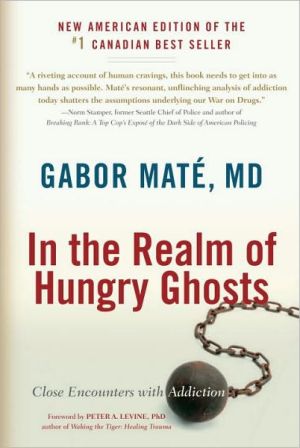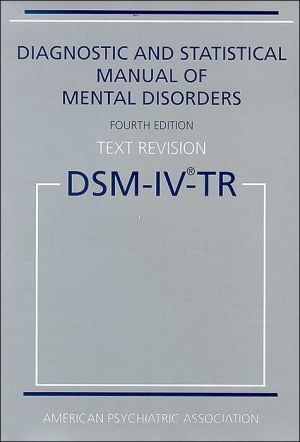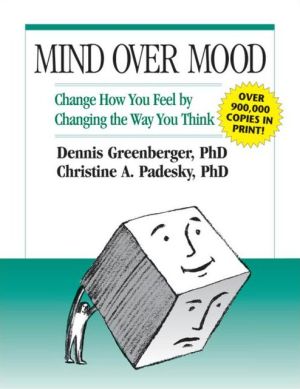When the Body Is the Target: Self-Harm, Pain, and Traumatic Attachments
In this comprehensive and insightful work, Dr. Sharon K. Farber provides an invaluable resource for the mental health professional who is struggling to understand self-harm and its origins. Using attachment theory to explain how addictive connections to pain and suffering develop, she discusses various kinds and functions of self-harm behavior. From eating disorders to body modifications such as tattooing, Dr. Farber explores the language of self-harm, and the translation of that language and...
Search in google:
In this comprehensive and insightful work, Dr. Sharon K. Farber provides an invaluable resource for the mental health professional who is struggling to understand self-harm and its origins. Using attachment theory to explain how addictive connections to pain and suffering develop, she discusses various kinds and functions of self-harm behavior. Booknews Farber, a clinical social worker, offers insights for the mental health professional struggling to understand self-harm and its origins. Using attachment theory to explain how addictive connections to pain and suffering develop, she discusses many kinds of behavior and explores the language of self-harm and the translation of that language and its psychic functions in the therapeutic setting. She includes rich clinical material in providing a practical approach to the diagnosis, assessment, and treatment of such patients, and shows how the attachment relationship formed in treatment can serve as the cornerstone of therapeutic change. Annotation c. Book News, Inc., Portland, OR (booknews.com)
Part 1 The Borderland of Self-Harm Chapter 2 The Mystery of Self-Harm: Concepts and Paradoxes Chapter 3 How Common Is Self-Harm? Chapter 4 Not Wanting to Know about Self-Harm: Trauma, Violence, and Chronic Mental Illness Part 5 Neglect, Violence, and Traumatic Attachments Chapter 6 Suffering and Self-Harm: Treating Oneself as the Other Dehumanization of the Other and Violent Suffering Chapter 7 How Attachments Go Haywire Chapter 8 The Psyche-Soma and Traumatic Attachments to Pain and Suffering Chapter 9 Survival and Sacrifice: When the Prey Becomes the Predator Chapter 10 Trauma, Duality, and the Transformation from Prey to Predator Part 11 The Body Speaks Chapter 12 The Body Speaks That Which Cannot Be Spoken Chapter 13 Self-Harm, Gender, and Perversion Chapter 14 The Addiction to Wanting: "Do Not Want What You Cannot Have" Part 15 Clinical Implications Chapter 16 The Attachment Paradigm Chapter 17 Diagnosis, Assessment, and Core Features Chapter 18 Using Attachment Theory in Therapy of Self-Harm Patients Chapter 19 Transference, Countertransference, and Enactments Chapter 20 From Self-Harm to Self-Reflection
\ Psychologist-Psychoanalyst: Division 39 NewsletterWhen the Body Is the Target is impressively comprehensive and jargon-free. Apart from its contents, its up-to-date bibliography alone makes it a must-read for graduate students. But the book is a worthy addition to even a seasoned clinician's library. By unraveling some of the paradoxes of self-harm, by demonstrating a successful method for dealing with individuals who engage in this behavior, she has enlarged the scope of psychoanalytic treatment and provided hope for an underserved group. She earns our gratitude for doing so.\ \ \ \ \ CHOICEThe present volume will be most helpful to graduate students through faculty and to professionals.\ \ \ From the PublisherWhether the book is utilized for a course of study on how to understand and treat those who harm themselves, or as a resource for those who wish to advance their knowledge and perfect their skills, or as a general reference book, When the Body is the Target will amply reward the reader for the time and effort devoted to it. National Membership Committee on Psychoanalysis in Clinical Social Work\ \ \ \ \ Edward J. KhantzianUsing clear and incisive language, Dr. Farber elegantly and empathically cuts to the core of the extreme suffering that our patients who repeatedly harm themselves endure. She provides an exhaustive, scholarly review of the underpinnings of self-mutilation and related behaviors in this beautifully written book. She then goes on to present one of the most sophisticated theoretical and clinical explanations to date showing why these behaviors have become so pervasive, how we can understand them, and what we can do to alleviate the suffering that is at the root of such disorders.\ \ \ \ \ Martin S. BergmannFew patients evoke in their therapists the kind of dread than those who continue to mutilate themselves during treatment do. Dr. Sharon Klayman Farber earns our gratitude for venturing deeply into this difficult domain. Every therapist treating these patients will learn a great deal from this book, but beyond the immediate, all those who are puzzled by the nature of human aggression will appreciate the many insights the author has assembled.\ \ \ \ \ Psychoanalytic Quarterly\ - Paula Wolk\ When the Body Is the Target is an impressive exploration of a disturbing part of the human experience; the book has the potential to help many clinicians, and by extension their patients.\ \ \ \ \ Summer/Fall 2009 United States Association For Body Pyschotherapy NewsletterIn an insightful exploration of self-harm, pain, and traumatic attachments, Farber considers anything from eating disorders to body modifications in an attempt to better understand the roots and motivations behind self-harm, and how its psychic functions in the therapeutic setting. . . . Richly supported by relevant, innovative research, the book offers a more practical approach to the diagnosis, following assessment, and adjusted treatment of the patients whose inner emotions are expressed through bodily harm.\ \ \ \ \ David W. KruegerIn a brilliant and unique work, Dr. Farber helps us to see the genius and hope of the symptoms of those who articulate self-harm in the lexicon of their bodies, to understand the creative attempt to reveal and conceal that which is inchoate and unformulated, and to listen to how the body speaks. With rich case material using the prototypes of eating disorders and self-mutilating behaviors, this is a definitive and comprehensive theoretical, developmental, and clinical reference work, eminently readable.\ \ \ \ \ BooknewsFarber, a clinical social worker, offers insights for the mental health professional struggling to understand self-harm and its origins. Using attachment theory to explain how addictive connections to pain and suffering develop, she discusses many kinds of behavior and explores the language of self-harm and the translation of that language and its psychic functions in the therapeutic setting. She includes rich clinical material in providing a practical approach to the diagnosis, assessment, and treatment of such patients, and shows how the attachment relationship formed in treatment can serve as the cornerstone of therapeutic change. Annotation c. Book News, Inc., Portland, OR (booknews.com)\ \








